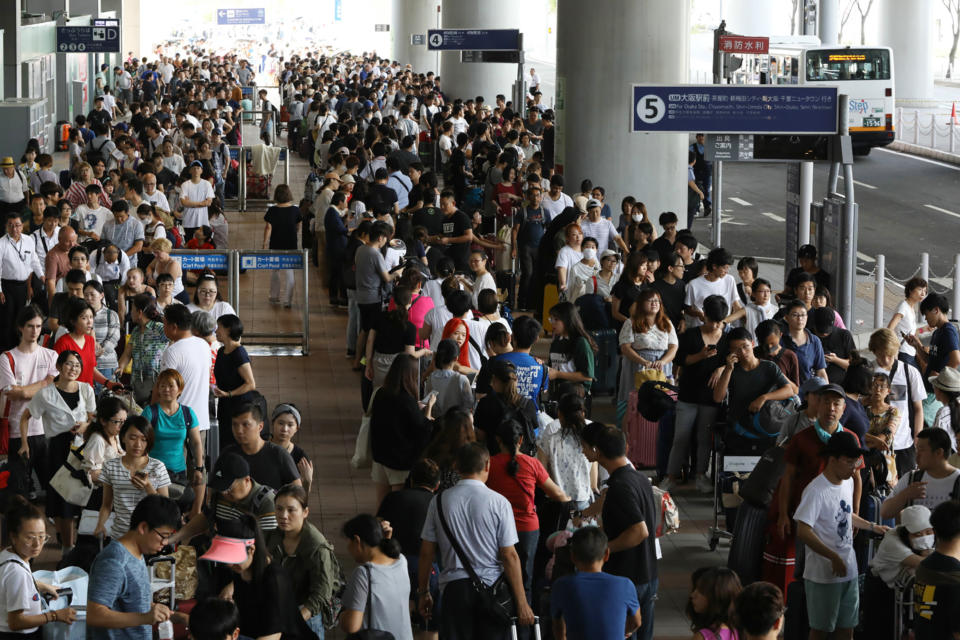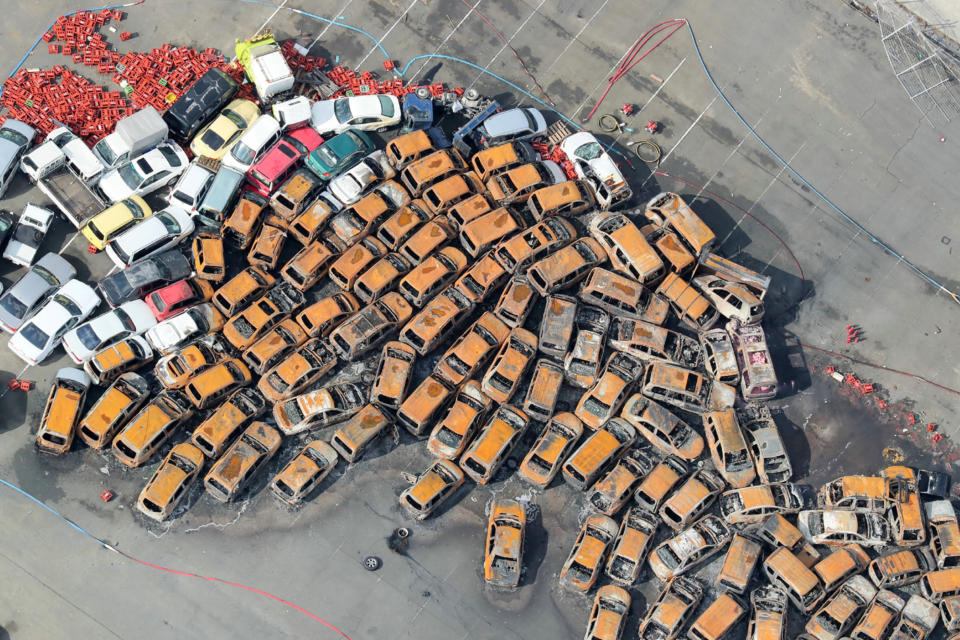Thousands in Japan have been evacuated in the wake of Typhoon Jebi. At least 11 people died in the strongest storm the country has seen in 25 years.
CGTN’s Terrence Terashima filed this report from the region.
There was a lot of anxiety as Typhoon Jebi crept towards the country. Government and meteorological agencies held regular press conferences warning people to take measures against the approaching storm.
Train travel was reduced or stopped altogether ahead of the storm’s impact. Schools and department stores alike closed their doors, and many companies followed suit. Elderly people and other residents living in potentially hazardous areas were evacuated to shelters.
However, despite the painstaking preparations and abundant caution, Jebi still managed to leave deep scars all across the country. Western Japan’s main international aviation hub, the Kansai airport was flooded, leaving 5,000 people stranded inside for the night. A key route to the airport was severed when a tanker truck collided with a nearby bridge.

Passengers stranded overnight at the Kansai International Airport due to typhoon Jebi queue for buses that will transport them from the airport in Izumisano city, Osaka prefecture on September 5, 2018. (AFP PHOTO / JIJI PRESS / JIJI PRESS)
Hundreds of toppled cars, damaged buildings lined the country’s streets, and fires erupted in several places. Jebi did not cause major landslides this time, as much of the damages were concentrated in urban areas and disrupted city infrastructure.
There was, however, considerable damage to crops in the fields awaiting autumn harvest. It’s estimated that, in some areas, the damage could amount to as much as 30 percent.

An aerial view from a Jiji Press helicopter shows passenger vehicles which were burnt after a storm surge and strong winds caused by typhoon Jebi in Nishinomiya, Hyogo prefecture on September 5, 2018. (AFP PHOTO / JIJI PRESS / JIJI PRESS)
The damages could have been worse, considering the magnitude of the typhoon. Experts say, there were two factors that helped. Preparations; such as minimizing traffic and people being outside and the typhoon accelerated as it passed fairly quickly over Japan.
However, Japanese meteorological agency said the typhoon season is not yet over, and continued vigilance is needed.
 CGTN America
CGTN America A man walks past a wooden house destroyed by strong winds from typhoon Jebi in Osaka on September 5, 2018. (AFP PHOTO / JIJI PRESS / JIJI PRESS)
A man walks past a wooden house destroyed by strong winds from typhoon Jebi in Osaka on September 5, 2018. (AFP PHOTO / JIJI PRESS / JIJI PRESS)
